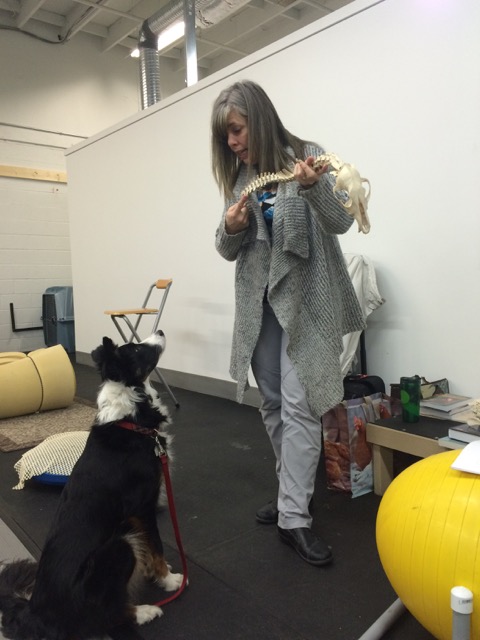Laurie's Blogs.
Oct 2017
Manual Therapy – An Up and Coming Topic in Canine Rehabilitation… Give me a Break!

Seriously! Since when did manual therapy become NEW in Canine Rehab?? A recent advertisement for a course deemed manual therapy to be ‘the hottest up and coming topic’ in canine rehabilitation. That just had me fuming!!! Furthermore, the program states that they were going to certify people in Canine Manual Therapy. If you took training in canine rehabilitation and didn’t learn the fundamentals of manual therapy… then you went to the wrong place to train!!! If you’ve been practicing canine rehabilitation and not doing manual therapy, then you’ve been failing your patients!
Manual therapy is a backbone and one of the fundamental underpinnings of physiotherapy and rehabilitation practice! It is the farthest thing from being ‘up and coming’!!! Shame! Shame! Shame! – for even suggesting such a thing!!
Physical therapy practice has a long history in manual therapy. Manual therapy encompasses, massage, mobilizations, myofascial techniques – basically anything you do with your hands to a patient is manual therapy. And it is fundamental to creating a full rehab plan / program for your patient.
Case scenario: Post op cruciate. The injury may be associated with a spine or pelvis dysfunction in the first place, and if not, the L6 vertebra (or L5 – L7) will become stiff / painful within 2 weeks of the injury or surgery due to the postural compensations. You need to address this with mobilizations. The joint itself will be swollen and painful in the acute stage. Here grade 1 mobilizations and joint compressions will reduce pain and swelling, rendering the joint much more functional in a shorter period of time.
Case scenario: Hip osteoarthritis. A painful hip responds well to mobilizations to help lubricate the joint and provide pain relief. Massage can help with the soft tissue soreness. Myofascial trigger point release of the deep gluteal can be fabulous. As well, these dogs likely have compensations in the thoracic spine from how they move when their hips are painful. Mobilizations and myofascial techniques for the thorax are better than any exercises for that region in this situation!
Case scenario: Athletic dogs with performance issues. I’m talking performance, not necessarily lameness, but things such as ‘popping out of weave poles’, ‘crooked sits’, inability to back up in a straight line’, ‘stutter stepping before a joint’, etc. ALL of these things are going to be due to a dysfunction (i.e. movement problem) within the axial skeleton. They will not correct unless the spine, ribs, pelvis, are assessed and dysfunctions treated.
Case scenario: Neurologic dogs with disc lesions. We KNOW from the people-side of physiotherapy, that disc lesions respond best to manual therapy – traction and mobilizations specifically. Studies done ON ANIMALS have validated the manual therapy techniques we use on humans. We are able to enhance blood flow, facilitate disc resorption, and provide pain relief with manual therapies. There is no ‘Crate-Rest-Fairy’ who sprinkles magical powder on dogs with discs left to convalesce in a crate!!! Discs need movement to heal; professionally applied manual therapies (and specific therapeutic exercise).
Okay… I’m finding it hard to calm down. So, I guess, if you didn’t learn manual therapy in your rehab training, then you have better learn it somewhere! It is a big field and there are many different techniques and ways of applying manual therapies. Kudos to FourLeg Members, because you have access to my videos that show a multitude of manual therapy techniques.
If you are looking for any of my ‘live’ teachings, the check out:
https://physiotherapy.ca/sub-sub-division-page
(Please note that the pre-requisites to register for these courses are host-dependent)
And as always, if you fly me (feed me and pay me too), I will come!
Additionally, what this has me realizing is that I need to do more teaching… somehow, I missed that manual therapy was missing from some of the basic canine rehab education out there! Use your hands people!
Rant over.
Cheers! Laurie


